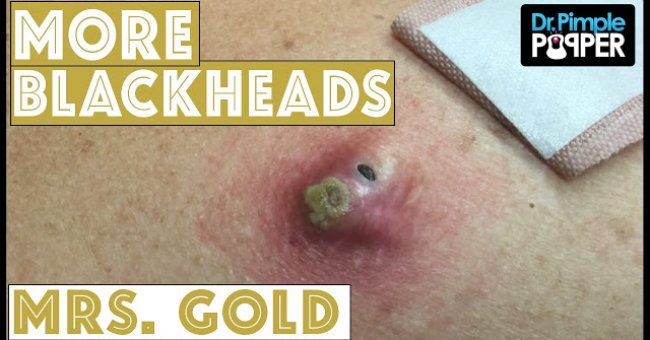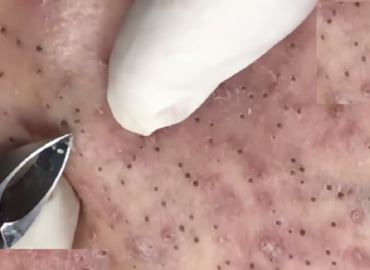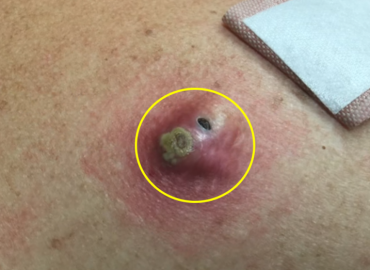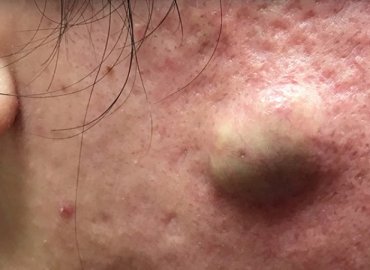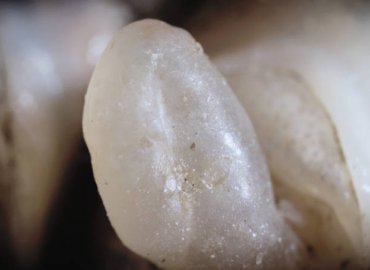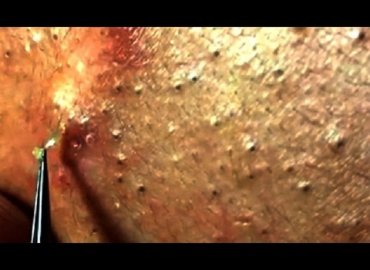Blackheads are small, dark lesions that appear on the skin, often on the face and neck. They are a feature of mild acne, but they can appear without other signs of acne being present.
They contain an oxidized version of melanin, the dark pigment made by cells in the skin.
In the United States (U.S.) acne is a skin infection that affects up to 50 million people. Handling blackheads in the right way can help prevent the development of more severe acne.
What are blackheads?
Blackheads are a type of comedo. Comedones occur when the pores in the skin become plugged with dead skin cells and an oily, protective substance known as sebum.
The top of the blackhead, which is visible on the surface of the skin, has a dark color.
Normally, hair grows from hair follicles in the pores, and the sebum-producing sebaceous glands lie underneath.
When these pores are plugged, the dead skin cells in the open pore react with oxygen in the air and turn black, forming a blackhead.
This is often confused with trapped dirt, but the development of blackheads is not related to the cleanliness of the skin.
Other acne lesions are usually closed, but in blackheads, the skin around the clogged pore opens, air gets in causing the collected sebum oil or dead skin cells to oxidize and turn black or sometimes yellowish.
Blackheads appear most frequently on the face, back, neck, chest, arms, and shoulders. There are more hair follicles in these areas.
Causes
Some factors can increase the chance of developing blackheads.
Age and hormonal changes are an important factor. Like other symptoms of acne, blackheads are most common during puberty, when the change in hormone levels triggers a spike in sebum production. However, they can appear at any age.
Androgen, the male sex hormone, triggers greater secretion of sebum and a higher turnover of skin cells around puberty. Both boys and girls experience higher levels of androgens during adolescence.
After puberty, hormonal changes related to menstruation, pregnancy, and the use of birth control pills can also bring on blackheads in women.
Overproduction of skin cells by the body can cause blackheads.
Other factors include:
the blocking or covering pores by cosmetics and clothing
heavy sweating
shaving and other activities that open the hair follicles
high humidity and grease in the immediate environment
some health conditions, such as stress, polycystic ovarian syndrome (PCOS) and premenstrual syndrome (PMS)
medications that encourage rapid skin cell turnover
use of some steroid-based drugs, such as corticosteroids
Contrary to popular belief, poor hygiene does not directly cause blackheads. Excessive scrubbing in an attempt to remove them can make them worse.
Symptoms
The main symptom is the small, dark lesion that gives blackheads their name.
Blackheads are a symptom of acne, but, being caused by open pores, they differ in some ways from other acne lesions.
Blackheads are non-inflammatory. This means they are not infected, and they will not cause pain and discomfort in the same way as pimples and pustules.
Blackheads have a raised texture, but they are flatter than pimples.
The change in appearance caused by blackheads can lead to embarrassment and social or psychological difficulties in some patients.
Treatment: Do’s and don’ts
Most people manage their blackheads at home without needing to see a doctor, but some activities can make them worse or trigger a more severe type of acne.
There are many myths and contradictions about how to treat blackheads, so it may be best to see what works for you.

